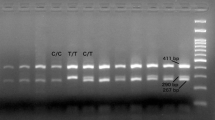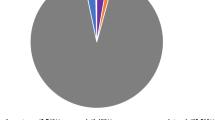Abstract
GPR50, formerly known as a melatonin-related receptor, is one of the three subtypes of melatonin receptor subfamily, together with MTNR1A and MTNR1B. GPR50, despite its high identity with the melatonin receptor family, does not bind melatonin and is considered to be an ortholog of MTNR1C in mammals. GPR50-expressing cells have been found in the dorsomedial nucleus of the hypothalamus, the periventricular nucleus, and the median eminence. Genetic and functional evidence have been recently investigated linking GPR50 to adaptive thermogenesis and torpor, but still, it is an orphan receptor and is yet to be studied conclusively. The aims of the study were to characterize the GPR50 gene of sheep and to study the sequence variability of the gene in Indian sheep breeds of two different thermo-varied agroclimatic conditions. Genomic DNA isolation was done and a 791-bp sequence was amplified using self-designed primers and SNP profiling done out of samples of all the breeds to study the relative frequency of SNPs in each of the breed. Five important non-synonymous mutations were observed in the various breeds studied. T698G, G1097A, G1270A, G1318A, and C1334G lead to the following substitution: valine by glycine, arginine by glutamine, threonine by alanine, isoleucine by valine, and serine by cytosine, respectively. Two synonymous mutations (T663G and C888T) were also observed in some of the studied breeds. G1270A and C888T were the most prevalent SNPs observed in nearly all of the breeds. C888T SNPs were observed in higher prevalence in Chokla, Marwari, and Magra in comparison to Gaddi and Bharat Merino. A PolyPhen-2 analysis, which is used to assess the potential damaging nature of an SNP, revealed that mutation T698G and G1270A were benign while G1097A, G1318A, and C1334G were damaging with a score of 0.987, 0.993, and 0.739, respectively. A 3-D homology model of the protein was prepared using c4zwjA (UniProt sequence ID) as a template using the online version of Phyre2 protein modeling software. The structure demonstrated closed similarity with other G-coupled receptor and it had a 45 % α-helical content. G1270A and C888T may be taken up for SNP correlation in a larger population study for their association with heat stress protection.




Similar content being viewed by others
References
Batailler M, Mullier A, Sidibe A, Delagrange P, Prévot V, Jockers R, Migaud M (2012) Neuroanatomical distribution of the orphan GPR50 receptor in adult sheep and rodent brains. J Neuroendocrinol 24:798–808
Bechtold DA, Sidibe A, Saer BA, Li J, Hand LE, Ivanova EA, Darras VM, Dam J, Jockers R, Luckman SM et al (2012) A role for the melatonin-related receptor, GPR50 in leptin signaling, adaptive thermogenesis and torpor. Curr Biol 22:70–77
Chu MX, Cheng DX, Liu WZ, Fang L, Ye SC (2006) Association between melatonin receptor 1 A gene and expression of reproductive seasonality in sheep. Asian–Aust J Anim Sci 19:1079–1084
Drew JE, Barrett P, Williams LM, Conway S, Morgan PJ (1998) The ovine melatonin-related receptor: cloning and preliminary distribution and binding studies. J Neuroendocrinol 10(9):651–661
Drew JE, Barrett P, Mercer JG, Moar KM, Canet E, Delagrange P, Morgan PJ (2001) Localization of the melatonin-related receptor in the rodent brain and peripheral tissues. J Neuroendocrinol 13(5):453–458
Dubocovich ML, Markowska M (2005) Functional MT1 and MT2 melatonin receptors in mammals. Endocrine 27:101–110
Dubocovich ML, Rivera-Bermudez MA, Gerdin MJ, Masana MI (2003) Molecular pharmacology, regulation and function of mammalian melatonin receptors. Front Biosci 8:1093–1108
Dufourny L, Levasseur A, Migaud M, Callebaut I, Pontarotti P, Malpaux B, Monget P (2008) GPR50 is the mammalian ortholog of Mel1c: evidence of rapid evolution in mammals. BMC Evol Biol 8:105
Ebisawa T, Karne S, Lerner MR, Reppert SM (1994) Expression cloning of a high-affinity melatonin receptor from Xenopus dermal melanophores. Proc Natl Acad Sci U S A 91(13):6133–6137
Kelley LA, Mezulis S, Yates CM, Wass MN, Sternberg MJE (2015) The Phyre2 web portal for protein modeling, prediction and analysis. Nat Protoc 10:845-858
Khan MZ, He L, Zhuang X (2016) The emerging role of GPR50 receptor in brain. Biomed Pharmacother 78:121–128
Levoye A, Dam J, Ayoub MA, Guillaume JL, Couturier C, Delagrange P, Jockers R (2006) The orphan GPR50 receptor specifically inhibits MT1 melatonin receptor function through heterodimerization. EMBO J 25(13):3012–3023
Morrison SF, Nakamura K, Madden CJ (2008) Central control of thermogenesis in mammals. Exp Physiol 93:773–797
Nakamura K (2011) Central circuitries for body temperature regulation and fever. Am J Physiol Regul Integr Comp Physiol 301:R1207–R1228
Pelletier J, Bodin L, Hanocq E, Malpaux B, Teyssier J, Thimonier J, Chemineau P (2000) Association between expression of reproductive seasonality and alleles of the gene for Mel(1a) receptor in the ewe. Biol Reprod 62:1096–1101
Reppert SM, Weaver DR, Ebisawa T (1994) Cloning and characterization of a mammalian melatonin receptor that mediates reproductive and circadian responses. Neuron 13(5):1177–1185
Reppert SM, Weaver DR, Cassone VM, Godson C, Kolakowski LF (1995) Melatonin receptors are for the birds: molecular analysis of two receptor subtypes differentially expressed in chick brain. Neuron 15(5):1003–1015
Reppert SM, Weaver DR, Ebisawa T, Mahle CD, Kolakowski LF (1996) Cloning of a melatonin-related receptor from human pituitary. FEBS Lett 386(2–3):219–224
Roca AL, Godson C, Weaver DR, Reppert SM (1996) Structure, characterization, and expression of the gene encoding the mouse Mel1a melatonin receptor. Endocrinology 137(8):3469–3477
Sambrook J, Russell DW (2001) Molecular cloning: a laboratory manual, 3rd ed. Cold Spring Harbor Laboratory Press, New York
Saxena VK, Jha BK, Meena AS, Naqvi SMK (2014) Sequence analysis and identification of new variations in the coding sequence of melatonin receptor gene (MTNR1A) of Indian Chokla sheep breed. Meta Gene 2:450–458
Saxena VK, Jha BK, Meena AS, Narula HK, Kumar D, Naqvi SMK (2015a) Assessment of genetic variability in the coding sequence of melatonin receptor gene (MTNR1A) in tropical arid sheep breeds of India. Reprod Domest Anim 50:517–521
Saxena VK, Jha BK, Meena AS, Naqvi SMK (2015b) Characterization of MTNR1A gene in terms of genetic variability in a panel of sub-temperate and sub-tropical Indian sheep breeds. J Genet 94(4):715–721
Swoap SJ (2012) Thermoregulation: an orphan receptor finds its way in the cold. Curr Biol 10(1) R17-8:22
Weaver DR, Liu C, Reppert SM (1996) Nature’s knock-out: the Mel1b receptor is not necessary for reproductive and circadian responses to melatonin in Siberian hamsters. Mol Endocrinol 10:1478–1487
Zhang Y, Li HQ, Yao YF, Liu W, Ni QY, Zhang MW, HL X (2015) Uneven evolutionary rate of the melatonin-related receptor gene (GPR50) in primates. Genet Mol Res 14(1):680–690
Acknowledgments
The research was funded by the Department of Biotechnology, Government of India (Grant/Project No. BT/PR14462/AAQ/01/442/2010). The authors are thankful to the Arid Region Campus, Central Sheep and Wool Research Institute and North Temperate Regional Station for allowing the blood sample collection from animals. Special acknowledgement to the director, CSWRI Avikanagar, for giving the required permissions and support to facilitate the conduction of experiments.
Author information
Authors and Affiliations
Corresponding author
Rights and permissions
About this article
Cite this article
Saxena, V.K., Kumar, D. & Naqvi, S.K. Molecular characterization of GPR50 gene and study of its comparative genetic variability in sheep breeds adapted to different thermo-contrasting climatic regimens. Int J Biometeorol 61, 701–707 (2017). https://doi.org/10.1007/s00484-016-1247-3
Received:
Revised:
Accepted:
Published:
Issue Date:
DOI: https://doi.org/10.1007/s00484-016-1247-3




